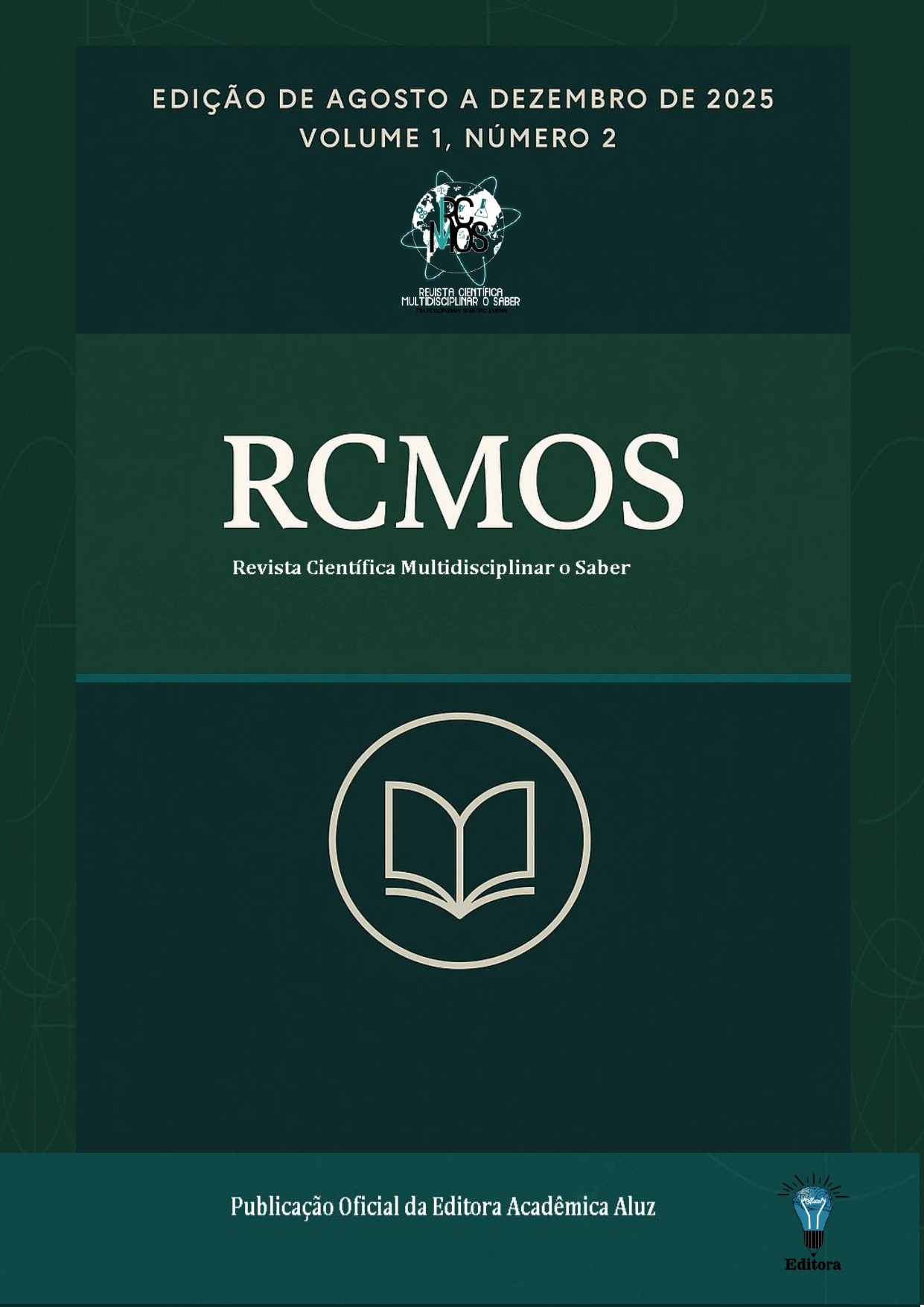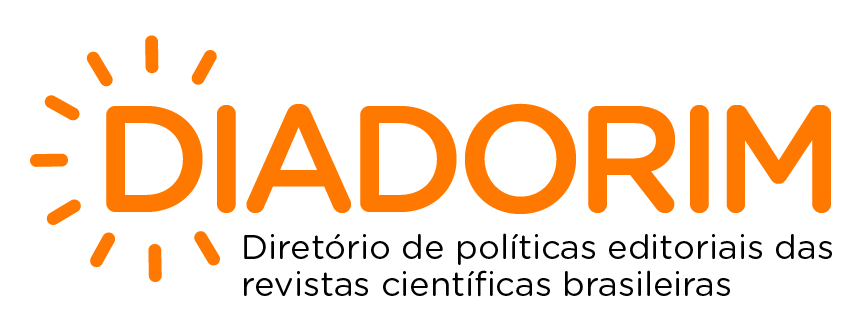SCIENTIOMETRIC REVIEW OF SCALING FACTORS FOR DEPTH AND FLUENCY OF DOSIMETRIC PHANTOMS MADE OF PLASTIC MATERIALS
Scientiometric review of scaling factors for depth and fluency of dosimetric phantoms made of plastic materials
DOI:
https://doi.org/10.51473/rcmos.v1i2.2025.1214Keywords:
Radiotherapy, Phantom, Scaling Factors, Dosimetry, ElectronsAbstract
This article presents a scientometric analysis of the scaling factors for depth (cpl) and fluence (hpl) in thermoplastic materials used in dosimetric phantoms, based on data from Scopus, Web of Science, and Science Direct (2015–2025). Out of the 89 identified articles, 6 were selected. An increase in publications was observed during the periods 2015–2017, 2018–2020 e 2021–2023. Iran led with 50% of the studies, followed by Brazil, South Korea, and Greece (16.67% each). The most cited material was RW3 (polystyrene with 2.1% ± 0.2% TiO₂, also know as Goettingen White Water), appearing in 50% of the articles. Polymethyl methacrylate (PMMA), SP34 (white polystyrene (C₈H₈) with a small percentage of titanium dioxide (TiO₂)), Lucite (a brand name for the synthetic plastic polymethyl methacrylate), and PLA (polylactic acid) were each addressed in 16.67% of the studies. The densities were as follows: PLA (1.240 g/cm³), PMMA (1.130 g/cm³), Lucite (1.190 g/cm³), RW3 and SP34 (1.045 g/cm³). The electron density was 3.940 and 1.01 (el/cm³ × 10²³) for PLA and SP34, respectively. The Hounsfield Unit (HU) value for PLA was 180±30. All studies were experimental, with one employing Monte Carlo (MC) simulation for validation. The scaling values for cpl and hpl were: PLA (0.946/1.050), PMMA (0.960/0.954), Lucite (0.941), RW3 (0.930/1.001), and SP34 (0.923/1.019). The scientometric analysis helps identify trends and impacts, optimizing resources in oncological research and promoting the development of more effective and accessible techniques for treating superficial tumors and relative dosimetry.
Downloads
References
INTERNATIONAL ATOMIC ENERGY AGENCY. Absorbed Dose Determination in External Beam Radiotherapy, Technical Reports Series No. 398 (Rev. 1). 2024.
DIAMANTOPOULOS, Stefanos et al. Theoretical and experimental determination of scaling factors in electron dosimetry for 3D‐printed polylactic acid. Medical physics, v. 45, n. 4, p. 1708-1714, 2018. DOI: https://doi.org/10.1002/mp.12790
ROONEY, Michael K. et al. Three‐dimensional printing in radiation oncology: a systematic review of the literature. Journal of applied clinical medical physics, v. 21, n. 8, p. 15-26, 2020. DOI: https://doi.org/10.1002/acm2.12907
HUQ, M. Saiful; YUE, N.; SUNTHARALINGAM, N. Experimental determination of depth‐scaling factors and central axis depth dose for clinical electron beams. International journal of cancer, v. 96, n. 4, p. 232-237, 2001. DOI: https://doi.org/10.1002/ijc.1025
PARTY, IPEM Working et al. The IPEM code of practice for electron dosimetry for radiotherapy beams of initial energy from 4 to 25 MeV based on an absorbed dose to water calibration. Physics in Medicine & Biology, v. 48, n. 18, p. 2929, 2003. DOI: https://doi.org/10.1088/0031-9155/48/18/301
PARK, So-Yeon et al. A patient-specific polylactic acid bolus made by a 3D printer for breast cancer radiation therapy. PloS one, v. 11, n. 12, p. e0168063, 2016. DOI: https://doi.org/10.1371/journal.pone.0168063
BURLESON, Sarah et al. Use of 3D printers to create a patient‐specific 3D bolus for external beam therapy. Journal of applied clinical medical physics, v. 16, n. 3, p. 166-178, 2015. DOI: https://doi.org/10.1120/jacmp.v16i3.5247
SU, Shiqin; MORAN, Kathryn; ROBAR, James L. Design and production of 3D printed bolus for electron radiation therapy. Journal of applied clinical medical physics, v. 15, n. 4, p. 194-211, 2014. DOI: https://doi.org/10.1120/jacmp.v15i4.4831
AVILES, JE Alpuche et al. On the physical and dosimetric properties of 3-dimensional printed electron bolus fabricated using polylactic acid. International Journal of Radiation Oncology, Biology, Physics, v. 96, n. 2, p. E622-E623, 2016. DOI: https://doi.org/10.1016/j.ijrobp.2016.06.2188
CUNHA, J. Adam M. et al. Evaluation of PC‐ISO for customized, 3D printed, gynecologic HDR brachytherapy applicators. Journal of applied clinical medical physics, v. 16, n. 1, p. 246-253, 2015. DOI: https://doi.org/10.1120/jacmp.v16i1.5168
DIAMANTOPOULOS, Stefanos; ZAVERDINOS, Panagiotis. Development of a three dimensional printed MRI compatible template for high dose rate prostate brachytherapy implants. Physica Medica, v. 32, p. 208-209, 2016. DOI: https://doi.org/10.1016/j.ejmp.2016.07.705
VENEZIANI, Glauco Rogério et al. Attenuation coefficient determination of printed ABS and PLA samples in diagnostic radiology standard beams. In: Journal of Physics: Conference Series. IOP Publishing, 2016. p. 012088. DOI: https://doi.org/10.1088/1742-6596/733/1/012088
PEREIRA, Dirceu Dias et al. Validation of polylactic acid polymer as soft tissue substitutive in radiotherapy. Radiation Physics and Chemistry, v. 189, p. 109726, 2021. DOI: https://doi.org/10.1016/j.radphyschem.2021.109726
IVANCHEVA, Ludmila. Scientometrics today: A methodological overview. Collnet journal of scientometrics and information management, v. 2, n. 2, p. 47-56, 2008. DOI: https://doi.org/10.1080/09737766.2008.10700853
PIOVESAN, Armando; TEMPORINI, Edméa Rita. Pesquisa exploratória: procedimento metodológico para o estudo de fatores humanos no campo da saúde pública. Revista de saúde pública, v. 29, p. 318-325, 1995. DOI: https://doi.org/10.1590/S0034-89101995000400010
ANDREO, Pedro. Monte Carlo simulations in radiotherapy dosimetry. Radiation Oncology, v. 13, n. 1, p. 121, 2018. DOI: https://doi.org/10.1186/s13014-018-1065-3
CARELLI, Maria José Guimarães; SANTOS, Acácia Aparecida Angeli dos. Temporaly and personal conditions of study of university students. Psicologia Escolar e Educacional, v. 2, n. 3, p. 265-278, 1998. DOI: https://doi.org/10.1590/S1413-85571998000300006
PAUL, Jean-Jacques; RIBEIRO, Zoya Dias. As condiçoes de vida e de trabalho dos alunos do ensino superor brasileiro: o caso das universidades de Fortaleza. Educação Brasileira, v. 13, n. 26, p. 71-127, 1991.
MCEWEN, M. R.; DUSAUTOY, A. R. Characterization of the water-equivalent material WTe for use in electron beam dosimetry. Physics in Medicine & Biology, v. 48, n. 13, p. 1885, 2003. DOI: https://doi.org/10.1088/0031-9155/48/13/302
ŞAHMARAN, TURAN; KAŞKAŞ, A. Comparisons of various water-equivalent materials with water phantom using the Geant4/GATE simulation program. International Journal of Radiation Research, v. 20, n. 3, p. 709-714, 2022.
SRINIVASAN, K. et al. Studies on the tissue and water equivalence of some 3D printing materials and dosimeters. Radiation Physics and Chemistry, v. 198, p. 110259, 2022. DOI: https://doi.org/10.1016/j.radphyschem.2022.110259
DAVARPANAH, Mohammad Reza. Scientometric analysis of nuclear science and technology research output in Iran. journal of Scholarly Publishing, v. 43, n. 4, p. 421-439, 2012. DOI: https://doi.org/10.1353/scp.2012.0016
BARROS, L. de O.; SILVA, M. G. C. da. Plano de Desenvolvimento da Radioterapia para a próxima década (RT-2030) Resenha. Revista Brasileira de Cancerologia, [S. l.], v. 70, n. 4, p. e–274889, 2024. DOI: 10.32635/2176-9745.RBC.2024v70n4.4889. Disponível em: https://rbc.inca.gov.br/index.php/revista/article/view/4889. Acesso em: 16 jun. 2025. DOI: https://doi.org/10.32635/2176-9745.RBC.2024v70n4.4889
SOUZA, APS et al. Simulating Araponga. Brazilian Journal of Radiation Sciences, 2022.
GUAL, M. R. et al. A SWOT analysis of a Floating Nuclear Power Plant for electricity generation in Brazil. Brazilian Journal of Radiation Sciences, v. 11, n. 4, p. 1-17, 2023. DOI: https://doi.org/10.15392/2319-0612.2023.2313
OKUNO, Emico; YOSHIMURA, Elisabeth Mateus. Física das radiações. Oficina de textos, 2016.
KIM, Kyo-Tae et al. Evaluation of the water-equivalent characteristics of the SP34 plastic phantom for film dosimetry in a clinical linear accelerator. Plos one, v. 18, n. 10, p. e0293191, 2023. DOI: https://doi.org/10.1371/journal.pone.0293191
NAKAO, Minoru et al. Tolerance levels of CT number to electron density table for photon beam in radiotherapy treatment planning system. Journal of Applied Clinical Medical Physics, v. 19, n. 1, p. 271-275, 2018. DOI: https://doi.org/10.1002/acm2.12226
DIAZ-MERCHAN, J. A. et al. Bolus 3D printing for radiotherapy with conventional PLA, ABS and TPU filaments: theoretical-experimental study. Applied Radiation and Isotopes, v. 199, p. 110908, 2023. DOI: https://doi.org/10.1016/j.apradiso.2023.110908
MONTGOMERY, Richard Murdoch. From Old Regime Portugal to Contemporary Brazil: Patrimonial Legacies, Aristocratic Mentalities, and the Delayed Pursuit of Scientific Advancement. 2024. DOI: https://doi.org/10.20944/preprints202412.1817.v1
CABRAL FILHO, José Eulálio. Is Brazilian scientific publication at a crossroad?. Revista Brasileira de Saúde Materno Infantil, v. 17, n. 3, p. 421-422, 2017. DOI: https://doi.org/10.1590/1806-93042017000300001
BARRETO, Mauricio L. Scientific research and graduate studies at the crossroads in Brazil. Cadernos de Saúde Pública, v. 30, p. 1600-1602, 2014. DOI: https://doi.org/10.1590/0102-311XCO030814
DE CASTRO MOREIRA, Ildeu. Brazilian science at a crossroads. Science, v. 301, n. 5630, p. 141-141, 2003. DOI: https://doi.org/10.1126/science.301.5630.141
Downloads
Additional Files
Published
Issue
Section
Categories
License
Copyright (c) 2025 Pedro Iwai, Rodrigo Gabriel Bueno, Otavio Akira Sakai (Autor)

This work is licensed under a Creative Commons Attribution 4.0 International License.











